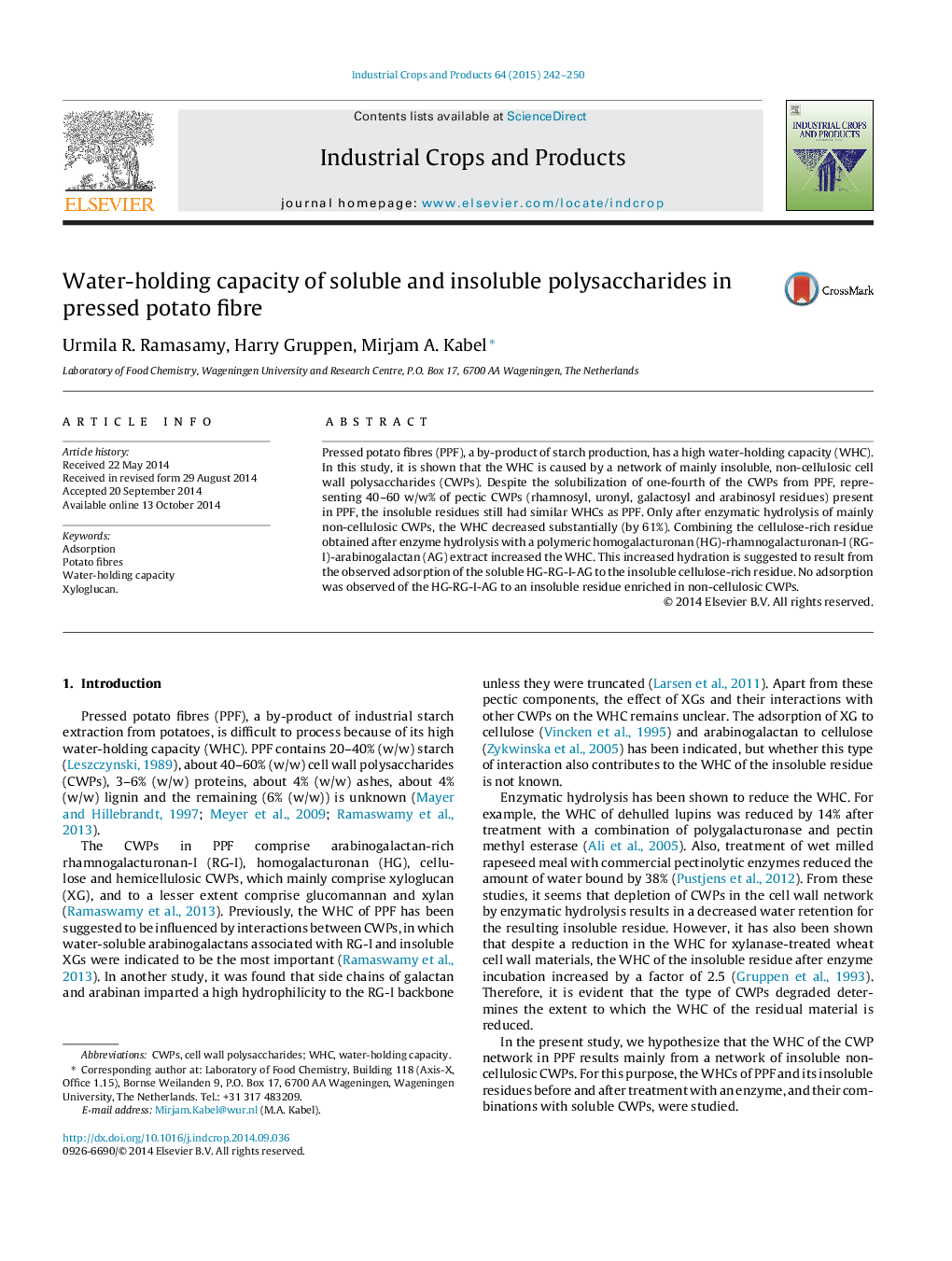| کد مقاله | کد نشریه | سال انتشار | مقاله انگلیسی | نسخه تمام متن |
|---|---|---|---|---|
| 4513029 | 1624845 | 2015 | 9 صفحه PDF | دانلود رایگان |
• Insoluble polysaccharide network holds water in pressed potato fibres.
• Solubilizing xyloglucan and pectin-arabinogalactan decreases water retention.
• Adsorption of pectin-arabinogalactan to cellulose increase water holding.
• Truncation of soluble pectic side chains could be important to lower water holding.
Pressed potato fibres (PPF), a by-product of starch production, has a high water-holding capacity (WHC). In this study, it is shown that the WHC is caused by a network of mainly insoluble, non-cellulosic cell wall polysaccharides (CWPs). Despite the solubilization of one-fourth of the CWPs from PPF, representing 40–60 w/w% of pectic CWPs (rhamnosyl, uronyl, galactosyl and arabinosyl residues) present in PPF, the insoluble residues still had similar WHCs as PPF. Only after enzymatic hydrolysis of mainly non-cellulosic CWPs, the WHC decreased substantially (by 61%). Combining the cellulose-rich residue obtained after enzyme hydrolysis with a polymeric homogalacturonan (HG)-rhamnogalacturonan-I (RG-I)-arabinogalactan (AG) extract increased the WHC. This increased hydration is suggested to result from the observed adsorption of the soluble HG-RG-I-AG to the insoluble cellulose-rich residue. No adsorption was observed of the HG-RG-I-AG to an insoluble residue enriched in non-cellulosic CWPs.
Journal: Industrial Crops and Products - Volume 64, February 2015, Pages 242–250
